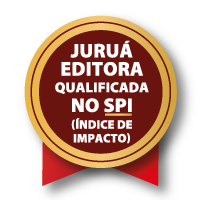The Case Fontevecchia and D’amico Against Argentina
DOI:
https://doi.org/10.19135/revista.consinter.00012.07Keywords:
Inter-American Court of Human Rights, Collision of Principles, Right to Privacy, Right to Freedom of Expression, Leading CaseAbstract
This scientific article was based on a case study, judged by the Argentine Supreme Court. In this process, the author filed a civil action in the civil court to compensate the damage against the authors, understanding that the right to privacy, privacy, honor and image rights were violated. The article sought to analyze the collision of principles, rules, rights and jurisprudence that led the Inter-American Court of Human Rights to rule in favor of Jorge Fontevecchia and Heitor D’amico. These were condemned by the Argentine State for understanding that there was a violation of the Right to Privacy. However, the international court decided to revoke the judgment passed and judged by the Supreme Court of the Argentine Nation, understanding that Fontevechia and D’amigo did not violate the Right to Freedom of Expression, making the action illegal and, therefore, forcing the Argentine State to withdraw the action and also to promote the due reparation of the damages caused to the. On February 14, 2017, the Argentine State rejected the decision of the Inter-American Court, transforming this case into one of the most famous “leading cases” of Argentine international public law. Finally, on October 18, 2017, the International Court issued another resolution to render the sentence in the Fontevecchia y D’Amico case ineffective. It was concluded, therefore, that even with the Argentine constitutional reform of 1994 and the granting of a constitutional hierarchy to international human rights standards, it was defined that the rules of international treaties “do not derogate from the provisions of the first part of the Argentine Constitution” under the terms of article 75, item 22, but attributed to the international treaties a character of complementarity, in addition to the prohibition, provided for in article 27 of the Vienna Convention on the Law of Treaties, to invoke reasons of domestic law for non-compliance in order to comply with international obligations. For the preparation of this scientific article, the deductive method and qualitative and descriptive research were used. As bibliographic references were used published materials, scientific literature, Law and Jurisprudence that were relevant to the purposes discussed here.
Downloads
References
ALEXY, Robert, Teoria dos direitos fundamentais, Tradução Virgílio Afonso da Silva, 2. ed, São Paulo, Malheiros, 2017.
ANDRADE, Geraldo, Direito à privacidade: Intimidade, vida privada e imagem, 2015. Disponível em: <https://quentasol.jusbrasil.com.br/artigos/214374415/direito-a-privacidade-intimidade-vida-privada-e-imagem>. Acesso em: 17 ago. 2017.
MIRABETE, Julio Fabbrini, Processo Penal, 18. ed, revisada e atualizada até 31 de dezembro de 2006, São Paulo, Atlas, 2008.
ARAÚJO, Luiz Alberto David; NUNES JÚNIOR, Vidal Serrano, Curso de Direito Constitucional, 9. ed, São Paulo, Saraiva, 2005.
BRASIL, Constituição (1988), Constituição da República Federativa do Brasil: promulgada em 5 de outubro de 1988, Organização do texto: Juarez de Oliveira, 4. ed, São Paulo, Saraiva, 1990.
BRASIL, Decreto N° 678, de 6 de novembro de 1992. Promulga a Convenção Americana sobre Direitos Humanos (Pacto de São José da Costa Rica), de 22 de novembro de 1969. Diário Oficial da União. Brasília, 09 nov. 1992.
BUELONI, Claudio, Existe Direito absoluto? 2014. Disponível em: <https://claudiobueloni.jusbrasil.com.br/artigos/122873636/existe-direito-absoluto>. Acesso em: 17 ago. 2017.
COLNAGO, Cláudio de Oliveira Santos; BRASIL JÚNIOR, Samuel Meira, A liberdade de expressão e suas limitações: um estudo comparativo entre Brasil e Argentina. Disponível em: <http://www.publicadireito.com.br/artigos/?cod=88e1ce84f9feef5a>. Acesso em: 17 ago. 2017.
CIDH, Comissão interamericana de direitos humanos, O que é a CIDH? 2006. Disponível em: <http://www.oas.org/pt/cidh/mandato/que.asp>. Acesso em: 17 ago. 2017.
Ermida Uriarte, O, La Declaración Sociolaboral del Mercosur y su eficacia jurídica, IUS ET VERITAS, 13(27), 247-258. Recuperado a partir de <http://revistas.pucp.edu.pe/index.php/iusetveritas/article/view/16270>.
FIORILO, Bruno Viudes, Os limites da liberdade de imprensa no Estado Democrático de Direito, Mar. 2015. Disponível em: <https://jus.com.br/artigos/37590/os-limites-da-liberdade-de-imprensa-no-estado-democratico-de-direito>. Acesso em: 17 ago. 2017.
LENZA, Pedro, Direito Constitucional Esquematizado, 10 ed, São Paulo, Método, 2006.
NOVELINO, Marcelo, Direito Constitucional, São Paulo, Método, 2008.
SARLET, Ingo Wolfgang; MARINONI, Luiz Guilherme; MITIDIERO, Daniel, Curso de Direito Constitucional, São Paulo, Revista dos Tribunais, 2012.
SARLET, Ingo Wolfgang, Dignidade da pessoa humana e direitos fundamentais na constituição federal de 1988, 5. ed, Porto Alegre, Livraria do Advogado, 2005.
SILVA, Jean Patrício da, Manual de introdução ao direito, Cabedelo, PB, 2014.
SIDH, Sistema Interamericano de Direitos Humanos, O quê, como, quando, onde e o porquê da Corte Interamericana. Disponível em: . Acesso em: 17 ago. 2017.
CSJ 368/1998 (34-M)./CS1, Ministerio de Relaciones Exteriores y Culto s/informe sentencia dictada en el caso “Fontevecchia y DAmigo vs. Argentina” por la Corte Interamericana de Derechos Humanos.
ARGENTINA, Corte Suprema de Justicia de la Nación. Menem Carlos Saúl c/Editorial Perfil y Otros s/ daños y perjuicios. Fallo.
Published
How to Cite
Issue
Section
License
Copyright (c) 2021 Everson Alexandre de Assumpção

This work is licensed under a Creative Commons Attribution-NonCommercial-ShareAlike 4.0 International License.
For universalization and free sharing of knowledge, CONSINTER Journal is indexed under the Creative Commons 4.0 License
Attribution – Non-Commercial Use – Sharing by the same 4.0 Brazil license.
It’s allowed:
– Copy, distribute, display and execute the work
– Create derivative works
Under the following conditions:
ATTRIBUTION
You must give credit to the original author, as specified by the author or licensor.
NON-COMMERCIAL USE
You may not use this work for commercial purposes.
SHARING BY THE SAME LICENSE
If you change, transform, or create another work based on it, you may only distribute the resulting work under a license identical to this one.
For each new use or distribution, you must make clear to others the license terms for this work.
Legal License (full license): https://creativecommons.org/licenses/by-nc-sa/4.0/deed.pt_BR









